AQL Calculator (Acceptable Quality Limit Calculator)
International Standard ISO2859-1
| Critical (defects) | Major (defects) | Minor (defects) | |
| Select AQL | |||
| Accept point | |||
| Reject point | |||
| Sample size | |||
Even though the AQL chart and AQL table can help you breakdown the numbers, you will need an AQL calculator to get the numbers quickly and enhance accuracy. The AQL calculator is a simple and highly convenient tool to calculate the required sample size quickly. You only need to input your lot size, inspection level, inspection type, and limits. The calculator will provide you with an accurate sample size according to the AQL standard. Using the AQL calculator is an effective way to streamline your AQL sampling process.
At Tetra Inspection, we are dedicated to helping importers, suppliers, and manufacturers to access the insight, services, and tools they need to streamline AQL sampling and inspection. You can rely on our AQL calculator to determine your AQL sample size for inspection. Tetra AQL calculator is robust, accurate, and also allows you to determine the number of tolerated defects by selecting the appropriate AQL Level. It is easy, simple, and accurate.
How is AQL applied in practice?
Major defects. These defects are less serious but are not acceptable by the end-users since they increase the risk of product failure. Importers typically assign the AQL standard of 2.5% to major defects.
Minor defects. They are small defects with a low impact on safety and the usability of the product. Most importers use the AQL standard of 4% for minor defects.
Each defect is not interpreted similarly by all inspection companies. But, importers and suppliers can agree on an AQL standard that is acceptable to both parties based on the level of risk they assume. Once an AQL standard is agreed on, it will be used as a reference during pre-shipment inspections. To determine the acceptable percentage for each type of defect in a shipment, order, or batch, you’ll use the AQL chart with AQL table, AQL sampling plan table, and AQL sampling chart, or the AQL calculator.
What does Acceptable Quality Level (AQL) means?
Acceptable Quality Level (AQL) is a statistic measurement of the maximum number of defective products considered acceptable in a sample size.
How to Read AQL Chart
AQL chart consists of 2 pages:
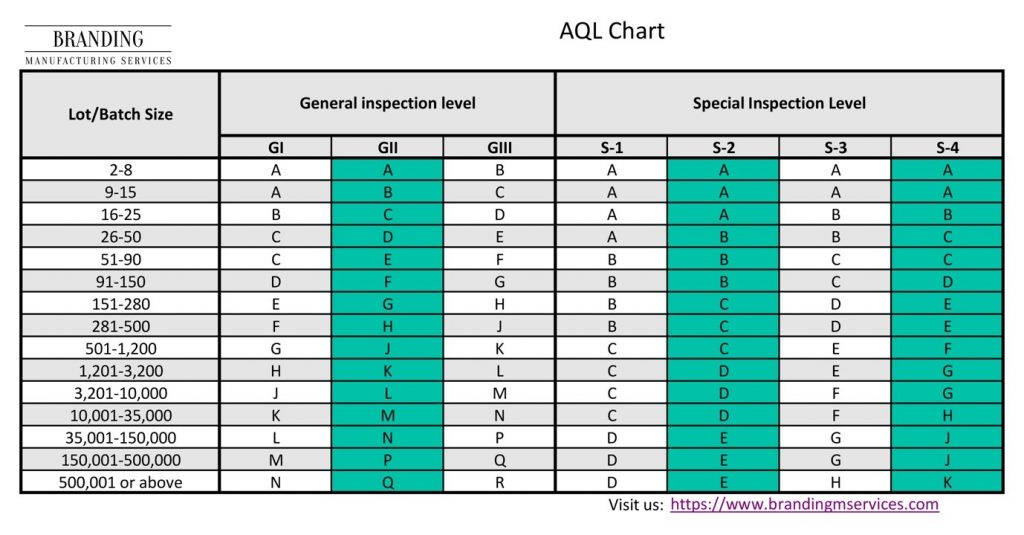
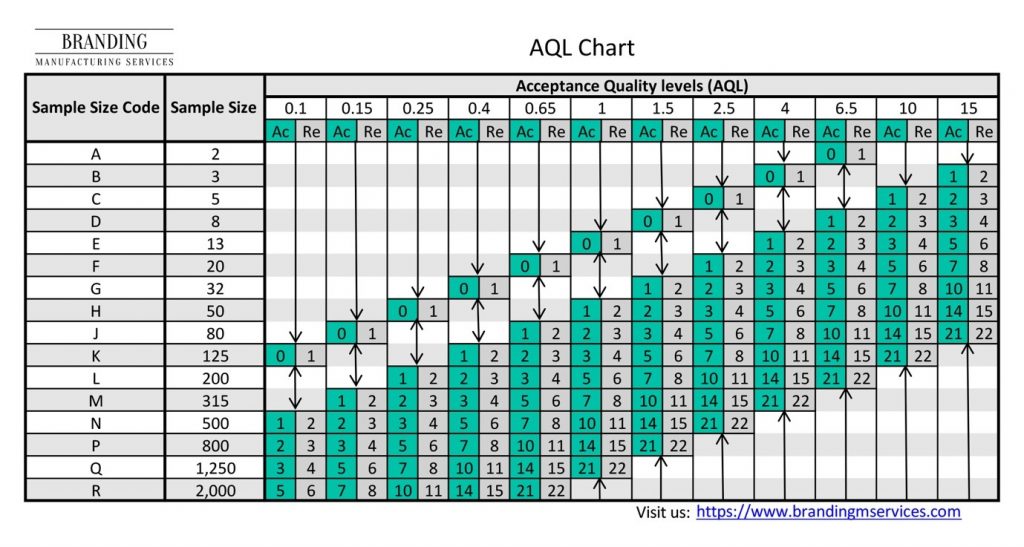
Let’s say for example in a shipment, there is an order of 3,000 pcs. In the table below, you can see how many sample sizes would be drawn for inspection based on GI, GII, GIII to S1 – S4.

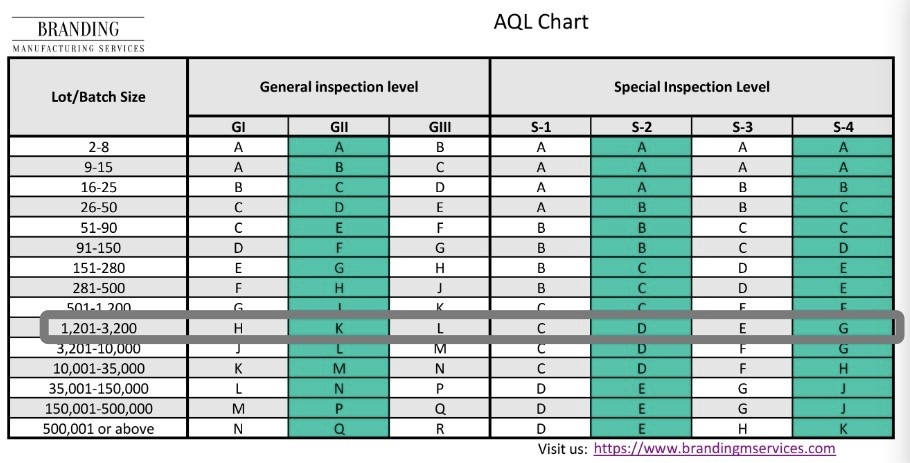
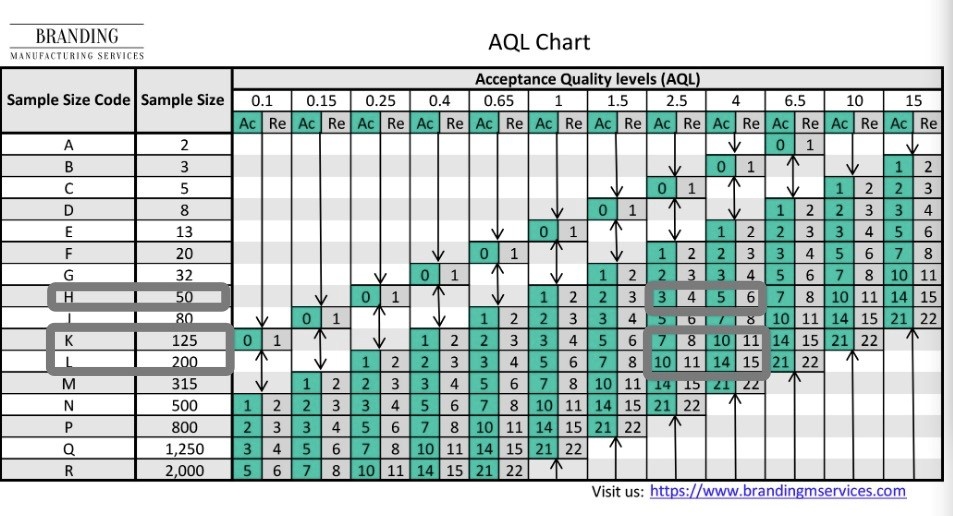
If the AQL are 0/2.5/4.0, the Ac and Re numbers will be as below tables:
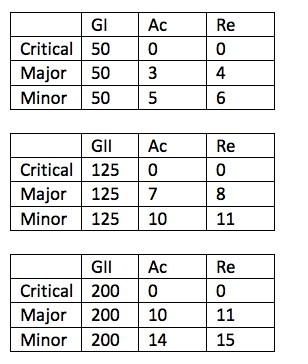
An example to show you how to read the AQL chart. Please contact us for more details.
